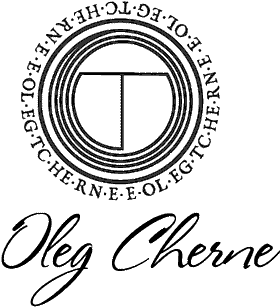Assyrian Alchemy
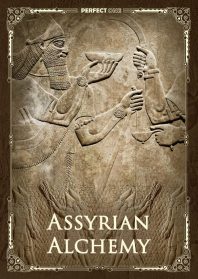
Assyrian alchemy is an art associated with the great historical region of Mesopotamia or the interfluve of the great rivers Tigris and Euphrates. It is predominantly located in present-day Iraq (partly in Iran, Turkey, and Syria). The oldest civilizations on the planet developed here, dedicated to the preservation and multiplication of the supreme indestructible light.
Several millennia of ancient Mesopotamian history contained the development of the great peoples of the interfluve – the Sumerians, Babylonians, Assyrians, and Akkadians. The last three were related to each other (they were Semitic tribes who came here from the west), and the Sumerians were the oldest inhabitants of these places – their written culture is the oldest on the planet. Later on, the ancient Persian tradition represented by Zarathustra, which came to Mesopotamia from the East, from the territory of modern Iran, had its influence on Assyrian alchemy.
The peoples of Mesopotamia had a great influence on the course of world history. A lot of knowledge of the people of ancient Mesopotamia is basic for human civilization and is used today (for example, the hexadecimal numbering system, the division of the circle by 360 degrees, and many other things). But above all, they were civilizations that created great sacred centers, where they carried out the tasks for which these civilizations existed.
At the top of this knowledge is Assyrian alchemy, which got its name from the Assyrian kingdom, which included the most extensive territory among the other states of Mesopotamia that existed at different times. At its height, the Assyrian kingdom stretched from modern Israel in the west to Iran in the east, and it also existed for the longest period (from the middle of the third millennium B.C. to 605 B.C.).
The Sumerians were the ancient local population of southern Mesopotamia, while the Babylonians, Assyrians, and Akkadians can be attributed to the Semitic peoples. Gradually their cultures blended to form the Sumerian-Akkadian community, in which the Sumerian language with its most ancient script anticipated the fate of Latin in Europe, gradually becoming the language of science and education until it disappeared altogether.
The origin of Assyrian alchemical art dates back to the ancient Sumerian civilization centered in the city-state of Uruk. This ancient city appeared in the middle of the fourth millennium B.C., and during its golden age in the third millennium, it reached the scale of influence and size so that several thousand years later no other city in the world could surpass the population level Uruk had reached before. The heart of Uruk was the sacred alchemical center known as E-anna. What processes took place there, what purposes did the ancient ziggurats of Mesopotamia serve?
The first alchemists of this time can rightly be considered the Sumerian rulers Enmerkar, Lugalbanda, and Gilgamesh, who in different degrees were endowed with human consciousness from the higher consciousness-Enki, manifested on Earth in the area of the Armenian Plateau, where the Tigris and Euphrates originate. The center of this northern Mesopotamian zone (Aratta) is also considered to be the first alchemical place where a lapis lazuli laboratory for storing consciousness (light) was created, which later became known as the Ark of Enki (Noah’s Ark in the Biblical version).
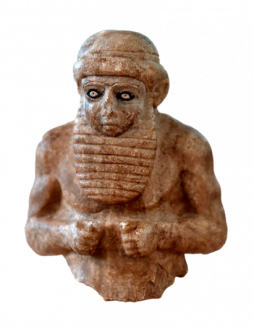
Statue of a priest (presumably Enmerkar) in alabaster. Late Uruk.
The preservation of light itself was also a power that is represented in the image of Inanna, the supreme deity of Aratta (Ishtar in Akkadian tradition). Thus, it can be said that luminosity and its preservation became two of the most important factors for Mesopotamian (Assyrian) alchemy.
Enmerkar was considered the guardian of Ishtar’s light and was also endowed with luminosity. The essence of his human beginning can be reduced to the concept of intention or service to the light, for which the presence of only 15-20 percent human beginning in the overall scheme of inner luminosity is sufficient. In other words, alchemists at first became such not by their own will, but by the will of the higher consciousness.
Enmerkar’s task was to receive light on Earth and to build special temples of light so that the energy of light could be stored and could be used as a source of nourishment. Then there was no separation in the concept of higher light and it belonged to the higher forms of radiation. Accordingly, this meant that the light reaching the Earth, both lunar and solar, was not perceived as true light, but only partially represented the nature of the luminosity of the true moon and especially of the sun, meaning that which does not obscure the atmosphere.
On Earth, the light associated with moonlight and the lunar energy is defined as magnetic. It was denser and was easier to store. The separation of light into sunlight and moonlight was an Earthly given, while the higher indivisible light was important to alchemy. In this way, the light was perceived on Earth in different forms and was divided into two efforts, of which sunlight was correlated with illumination and moonlight was that which stored and nourished light as a whole.
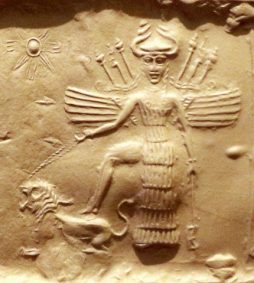
Ishtar (Inanna), appearing as a conductor of light
A special place, a laboratory, was required to receive and store the light and the resulting transformed energy. In such laboratories, the transformation took place mainly with the help of metals and minerals. And it was in Uruk that the first alchemical laboratory E-Anna (Eanna) was established. It was a temple of light or a temple of heaven through which the first human individuals (containing human energy) could be replenished, filled with light.
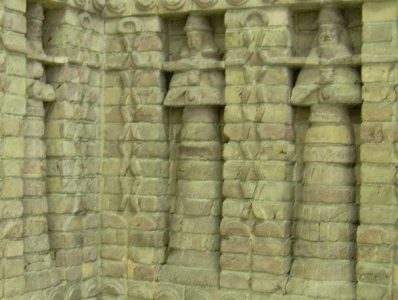
Repository of light
Minerals, which had the ability to absorb and retain energy, were important for light storage. It could be said that mankind’s quest for immortality began with the creation of this repository. And this story is actually connected with the image of the immortal Gilgamesh, endowed with more human qualities than his predecessors. The notion of a demigod was actually a certain level of immortality that many divine or human individuals possessed. At this time, it could be said that alchemists were born as such rather than becoming such.
This work was inherited by Lugalbanda, another Sumerian ruler of Uruk. However, he did not continue to develop the human element and transferred everything into the hands of Gilgamesh, who had a large amount of coarser (human) energy (actually needed to control the light on Earth). But the development of this energy became a bit of an obstacle for Gilgamesh on the way to full (celestial) immortality.
This situation develops during the Sumer-Akkadian kingdom (a state from the late XXII – XXI centuries BC), Babylon, and Assyria, and ends with the period of Zarathustra, the formation of Zoroastrianism, and the manifestation of completely different possibilities for human existence. It is from the time of Zarathustra (we will assume this to be the 10th century BC) that we can speak not only of man’s influence on alchemy but also of the possibilities associated with it.
Thus, the continuity of knowledge crystallized in the Sumerian period and then carried over into the Akkadian period, Assyria, Babylon. And with the appearance of the Avesta (the life of Zarathustra) we can speak of a definitive systematization along the lines of Assyrian alchemy.
In this aspect, we can distinguish three stages in Assyrian alchemy.
- The head as the repository of higher consciousness and the center of its government.
This stage dates back to the time of the Sumerians – it was the first civilization formed in the places between the Tigris and Euphrates around 4000 BC, which also began to form human consciousness. During this period, not just the human being, but the human head (or rather the skull) began to fulfill a special purpose and became a repository of higher consciousness and also a site of emerging effort.
- The Seven Sprouts of Utnapishtim
Utnapishtim – “found breath”. This is the Assyrian name of the hero of the ancient epic known in Sumerian texts as Ziusudra. He represents the process of gaining immortality, made famous by Gilgamesh.
Here are the components of this process:
- Knowledge of human nature
- Altering the nature of breathing
- Deviation of coarse vibrations
- Journey of transformation
- A process of constant cleansing
- Process of renewal
- Process of permanent out-of-time attunement
- The Seven Luminaries of Ahura Mazda
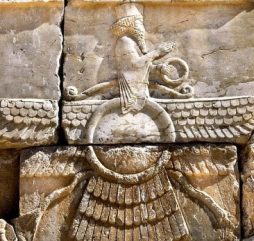
Zarathustra
- A state of unified higher consciousness characterized by luminosity. Ahura Mazda.
- Existence of two kinds of light – Gettig and Menog, lower and higher.
- Limit of the lower light in the laws of the higher manifestation. Three kinds of imperishable energy. Saoshyant.
- Capacity of manifestation of superior light. Zarathustra.
- Essence of true light. Avesta.
- Maintenance of the sacred (higher) light.
- Higher light – the basis of the essential content of fravashi (true spirit) inherent in all living parts of the macrocosm.
